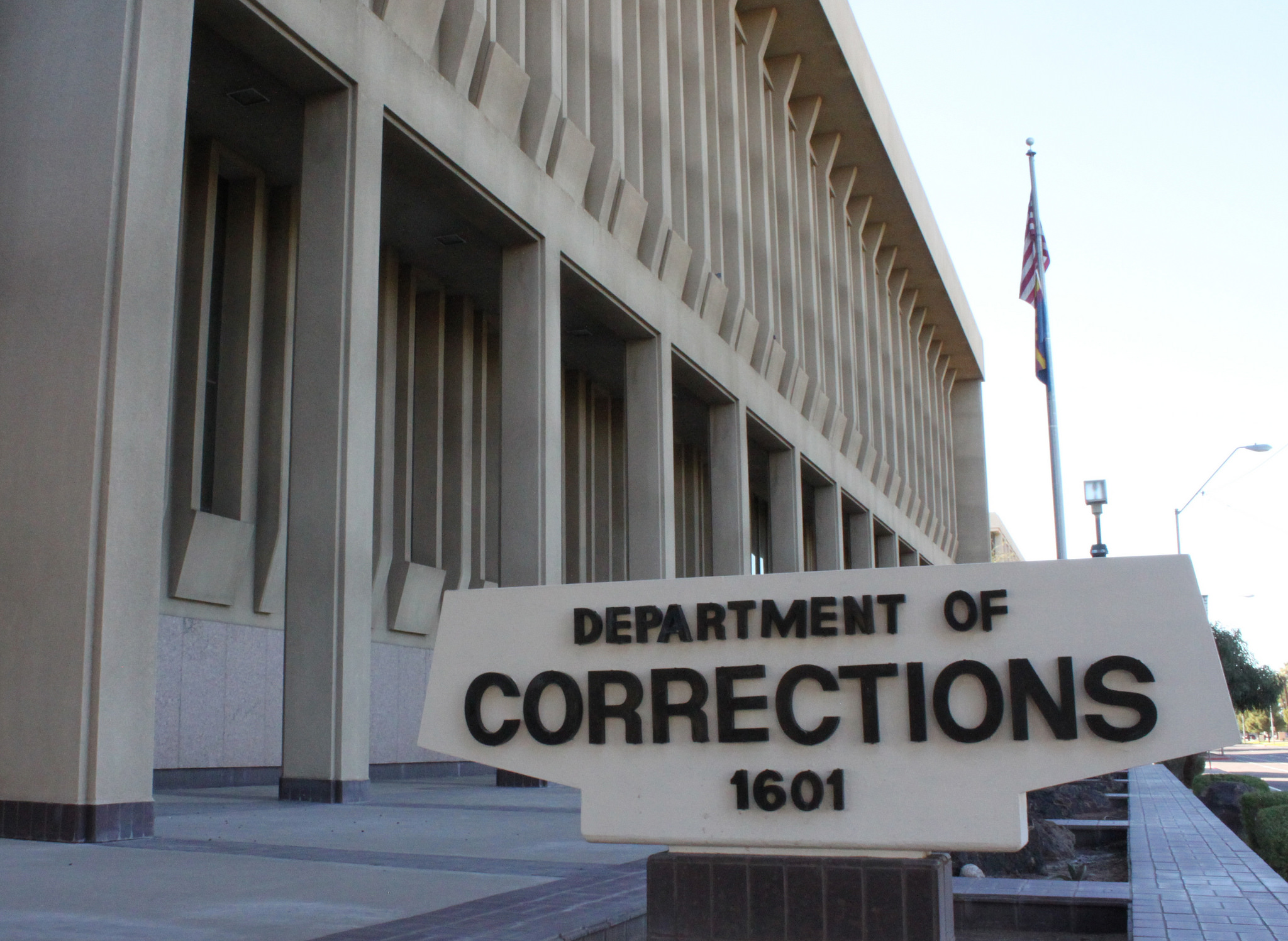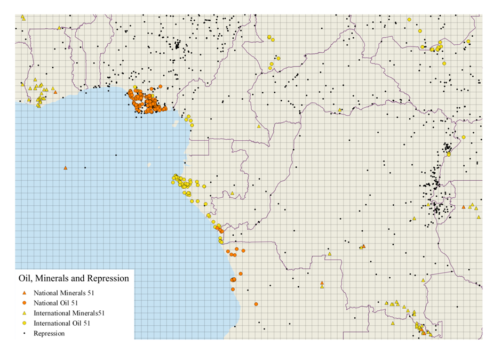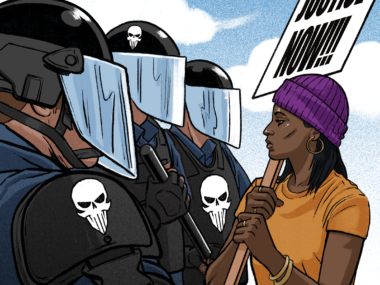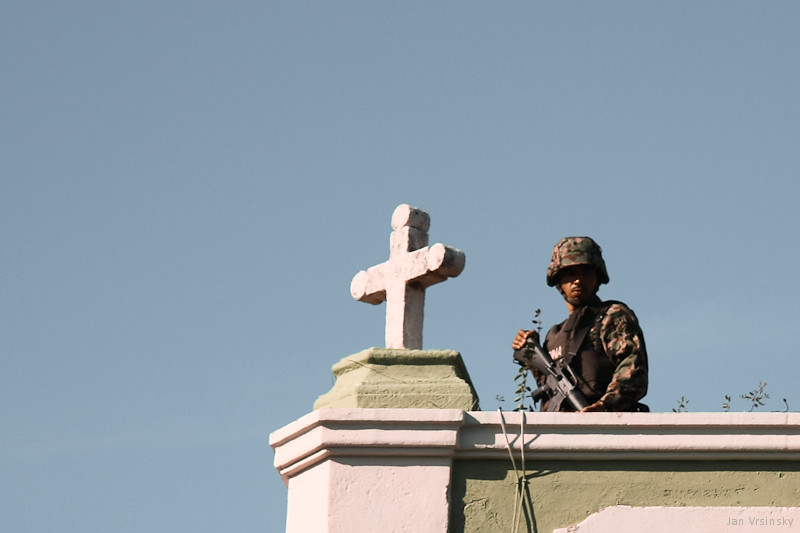Guest post by Ryan M. Welch.
Over the last 15 years, the US government’s relationship with torture has been…complicated. The “Torture Memos,” drafted by the Bush administration, presented debatable legal arguments to justify torture as a legitimate foreign policy option. Obama used an Executive Order discontinuing the use of “black sites” and water-boarding and a 2012 Senate Intelligence Committee report admitted that the practices performed by the US in the War on Terror amounted to torture. Despite this, other cruel and inhuman practices continued to hold legal status during Obama’s administration, including stress positions, close confinement, environmental (usually temperature) manipulation, solitary confinement, and sleep deprivation. The current President has called for the re-instatement of water-boarding and other torture practices and “black site” prisons – although he did vow to cede judgement on the matter of torture to the Secretary of Defense, James Mattis, who does not support its use.
Though important, these high-profile stories paint an incomplete picture of torture in the United States. In short, the media’s incentives make covering stories about high-ranking government officials worthwhile, but research suggests we look to what occurs in jails and prisons to gain a more accurate view on torture. Unfortunately, the media possess neither the incentives nor resources to effectively monitor these more common sites of abuse. Given the media’s constraints, which institutions might help serve this purpose?
In a recently published study, I argue that oversight bodies can help bring these “less visible” abuses to light. National Human Rights Institutions (NHRIs) are oversight institutions established by governments that can call attention to instances in which police, prison guards, and other officials abuse peoples’ rights. NHRIs can take reports from the public and even monitor and investigate locations where torture secretly occurs. As such, these institutions play an important role in uncovering – and subsequently disseminating – information regarding unlawful abuse. While official reports often fail to induce change, they can generate public pressure on the officials involved. My study finds that countries with established NHRIs better honor their commitment to the UN Convention against Torture than those countries that do not possess an NHRI.
Despite pressure from scholars, the UN, and activists, the US is not one of those countries with a National Human Rights Institution; however, many local human rights committees exist throughout the country. A Google search of a city/state and “human rights committee” will often yield analogous institutions. One such institution is the Maricopa County Human Rights Committee (MCHRC). Arizona statute 41-3803 established human rights committees throughout the state with a directed focus on the seriously mentally ill (SMI) population. Like their national counterparts, state and local committees are charged with the promotion and protection of rights through activities including, but not limited to, reviewing service programs, reviewing allegations of possible abuse, and making site visits.
Recently, the MCHRC met to discuss solutions for possible rights violations in jails – the Arizona Department of Corrections (ADC) has a contentious past with both treatment of the severely mentally ill (SMI) and the issue of solitary confinement. Those shortcomings, combined with the fact that mentally ill prisoners find themselves in solitary more often and the psychologically-damaging effects are worse for them, make the present situation a potentially serious human rights concern. In fact, both the UN and a US district appeals court (Jones-El v. Berge) conclude that solitary confinement of mentally ill prisoners amounts to torture and/or cruel and unusual punishment.
A settlement in a class-action suit, Parsons v. Ryan, required an overhaul of solitary confinement policies for SMI prisoners in the state of Arizona – including an increase in the hours per week out of the cell from six to 19, access to mental health treatment, and a reduction in pepper spray use. Due to poor compliance after the ruling, on April 11, 2016, the American Civil Liberties Union filed a motion – and the court upheld – that the ADC come into compliance.
Arizona human rights committees offer an appropriate institution to monitor ADC’s compliance with Parsons v. Ryan. By evaluating data on which SMI prisoners the ADC relegates to solitary confinement, how often, and for what offenses, Arizona’s human rights committees function as another piece of the monitoring apparatus. Research suggests the perception of being watched by a third party can even deter inappropriate behavior from occurring in the first place. Further, by routinely checking the data, these committees can find aberrations in behavior and report them to appropriate parties. By monitoring, investigating, and disseminating information, local human rights committees act in a similar fashion to their national counter parts (NHRIs). In this way, these local institutions can reduce human rights abuses – such as solitary confinement of the mentally ill – that otherwise would not make media headlines.
Ryan M. Welch is a postdoctoral associate at Arizona State University’s School of Politics and Global Studies and served as a committee member of the Maricopa County Human Rights Committee from August 2015 to March 2017. The ideas expressed in this post represent his ideas rather than those of his institutional affiliations.






